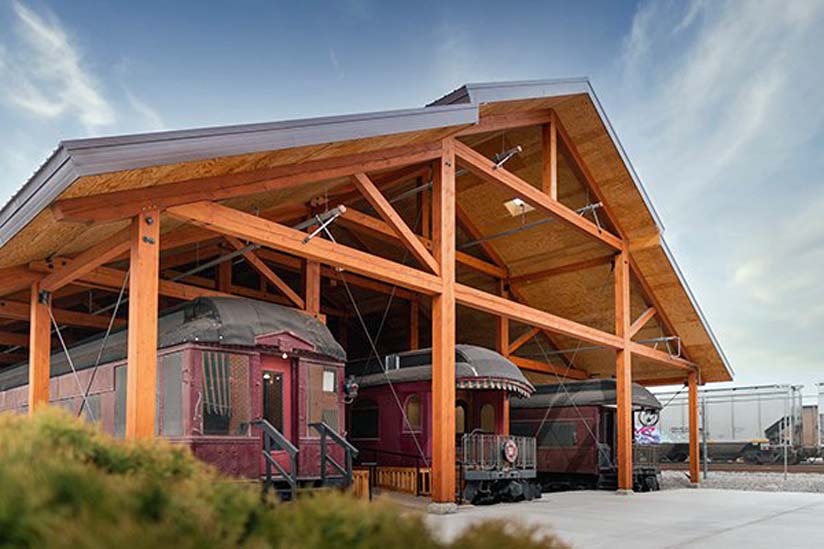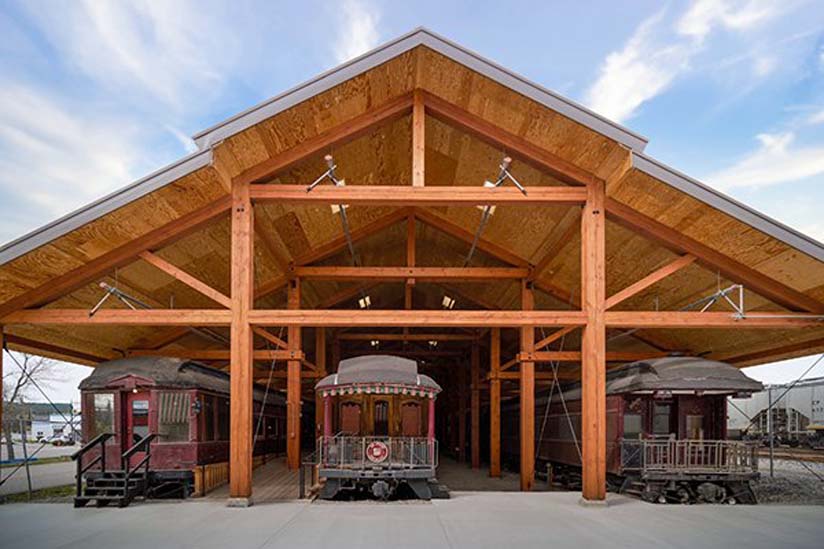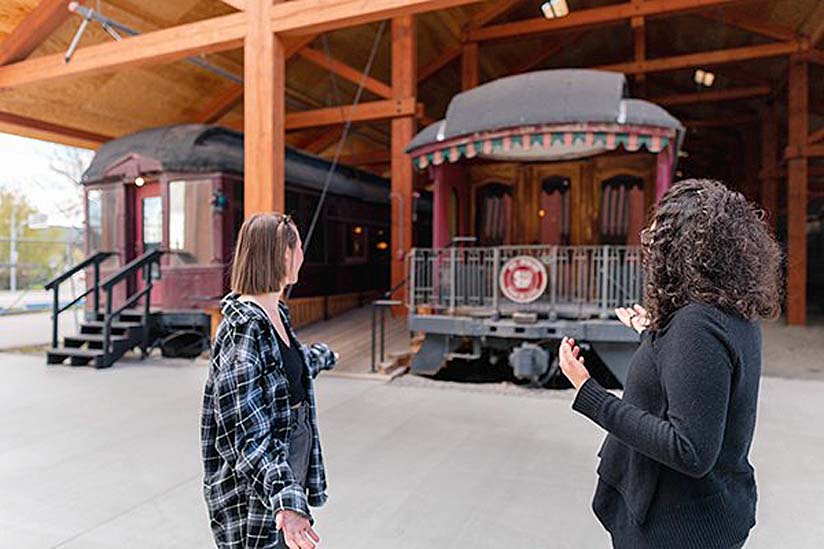
Cranbrook British Columbia - The 1924 poster shows passengers pointing out spectacular,
mountainous, scenery, all while enjoying the comforts of the "fastest train across the continent", the
Trans-Canada Limited.
Now, roughly a century later, anyone can experience these exact train cars at the Cranbrook History Centre, many of
which are shielded from the elements thanks to an impressive timber-frame building.
Constructed in 2019 with Columbia Basin Trust support, the Heritage Rail Car Building, more commonly known as the train
shed, covers three tracks and nine of the museum's 19 historic train cars.
"It's a huge step toward preserving this collection," said Bob Whetham, Chair of the Cranbrook Archives
Museum and Landmark Foundation, which oversees the museum.

By preserving the cars, the building also helps preserve history.
The Trans-Canada Limited, which travelled through Golden, is "part of Canada's heritage," Whetham
said.
The luxurious Soo-Spokane train made pit stops in Cranbrook.
"It's important, Cranbrook was founded because of the railway. The story that we have here is both local and
national."
Constructing the building was no simple feat.
Kimberley-based builder Tyee Log Homes used local materials to create the shed, which is nearly 77 metres long and 20
metres wide.
The challenge was that the trains couldn't be moved, and so the structure had to go up carefully around
them.
"It's an incredible testament to the skills of the people we have in the region."
Plus, "The fact that so much of it was done locally is a matter of local pride."
History is safeguarded, employment was supported, tourists are attracted, there are many reasons why this building is
more than just a frame and roof.

People in the region have told the Trust that impacts like these are important to them, improving community well-being
and creating a strong economy.
In fact, the Trust has supported the museum over the years as it re-branded itself from the Canadian Museum of Rail
Travel to the broader-mandated Cranbrook History Centre, re-shingled a freight shed roof, and developed a fundraising
strategy for the Heritage Rail Car Building, among other projects.
Whetham said, "We really appreciate the fact that the Trust has seen the value in what's being done here and
supported us over the years."
Other contributors include the Regional District of East Kootenay, which enabled the museum to build an accessible
platform in the shed so that visitors with wheelchairs or walkers, which unfortunately can't fit through the antique
trains, can view the interiors through the windows.
"It's been very much a collaborative effort."
Now, with these cars protected, exterior renovations can begin.
And phase two of the building should take place soon, covering the remaining cars of the museum's core
collection.
"We're also working with First Nations on telling some of their story" when it comes to the effects of trains
being introduced in their traditional territories, Whetham said.
He is enthusiastic about the trains and the museum's work to take care of them, he himself worked as a sleeping car
porter on the Trans-Canada Limited when a student in 1967, long after its heyday as a luxury passenger
train.
"The building is really something and it really sets off the cars beautifully."
Author unknown.
(there was no image with original article)
(usually because it's been seen before)
provisions in Section 29 of the
Canadian Copyright Modernization Act.

